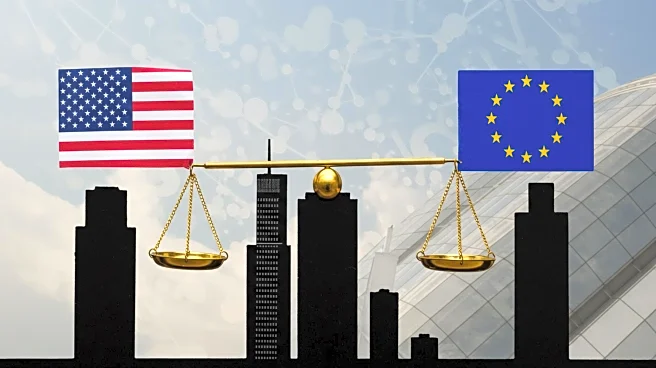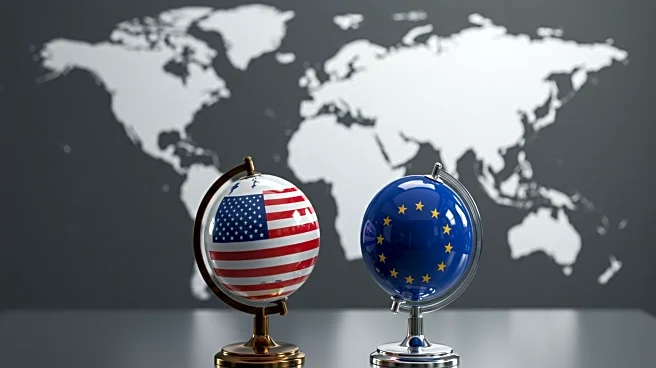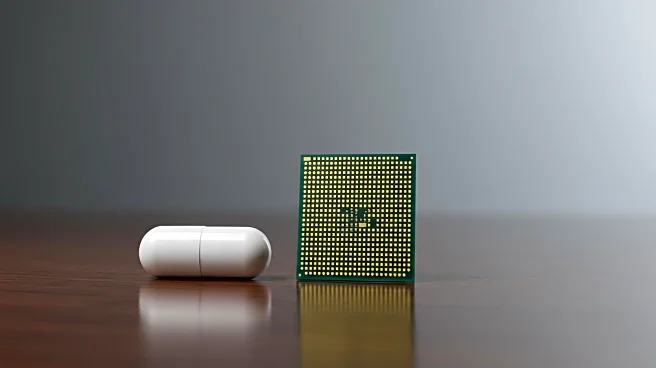What's Happening?
The United States and the European Union have announced further details of their trade deal framework, initially agreed upon in late July. This framework aims to enhance trade relations between the two largest trading partners globally. Key elements include the EU eliminating tariffs on U.S. industrial goods and providing preferential access for various U.S. agricultural products. The U.S. will apply a 15% tariff rate on EU goods, effective September 1, with specific products like pharmaceuticals and semiconductors capped at this rate. Additionally, the EU plans to purchase $750 billion in U.S. energy products and invest $600 billion in strategic sectors in the U.S. through 2028. This agreement is seen as a step towards resolving trade imbalances and boosting economic power.
Why It's Important?
The trade deal between the U.S. and EU is significant as it addresses longstanding trade imbalances and aims to strengthen economic ties. By eliminating tariffs on industrial goods and expanding access to agricultural products, the agreement could benefit U.S. exporters and stimulate economic growth. The commitment to purchase U.S. energy products and invest in strategic sectors highlights the importance of energy security and technological advancement. This deal may also influence global trade dynamics, as other countries observe the evolving relationship between these major economies. Industries such as agriculture, energy, and technology stand to gain from increased market access and investment.
What's Next?
The next steps involve implementing the agreed-upon tariff changes and monitoring the impact on trade flows. The EU's planned legislation to reduce tariffs will be crucial in determining the final structure of the agreement. Stakeholders, including businesses and policymakers, will likely assess the deal's effectiveness in addressing trade imbalances and fostering economic growth. Further negotiations may expand the framework to include additional sectors, enhancing market access and investment opportunities. The global trade community will watch closely as the U.S. and EU navigate these changes, potentially influencing future trade agreements with other nations.
Beyond the Headlines
The trade deal could have deeper implications for global trade policies, particularly in terms of balancing economic power between major economies. The focus on energy and technology investments reflects a strategic shift towards sustainable and innovative growth. Ethical considerations may arise regarding the environmental impact of increased energy production and consumption. Additionally, the deal may set a precedent for future trade negotiations, emphasizing the importance of mutual benefits and fair practices. Long-term shifts in trade patterns could emerge as countries adapt to the evolving landscape shaped by this agreement.












